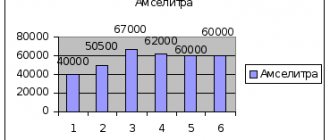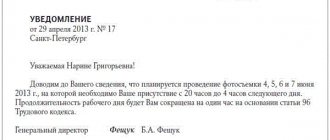Why are high-pitched sounds dangerous?
Noise levels may vary. Some do not exceed the norms established by law and do not interfere with human life. During the daytime, a higher sound level is allowed, but it also has its own limits in decibels. If the norm is exceeded, the person may feel nervous and irritable. Reactions are slowed down, productivity and intelligence decrease.
Noise above 70 decibels can cause hearing impairment. Especially loud sounds have a strong impact on the health of children, disabled people and the elderly. According to studies of the influence of noise on humans, the reaction of the nervous system to an increase in permissible background noise standards begins at 40 decibels. Sleep is disturbed already at 35 dB.
Strong changes in the nervous system occur at noise levels of 70 decibels. In this case, a person may experience mental illness, hearing and vision deterioration, and even a negative change in blood composition.
For example, in Germany, almost twenty percent of workers work in noise levels between 85 and 90 decibels. And this led to increased cases of hearing loss. Constant noise that exceeds the norm entails, at a minimum, drowsiness, fatigue and irritation.
Comparison
The permissible noise level in premises intended for human habitation is regulated by law.
At different times of the day the indicators are different:
Dear readers! The article talks about typical ways to resolve legal issues, but each case is individual. If you want to find out how to solve your particular problem , contact a consultant:
+7 (499) 938-81-90 (Moscow)
+7 (812) 467-32-77 (Saint Petersburg)
8 (800) 301-79-36 (Regions)
APPLICATIONS AND CALLS ARE ACCEPTED 24/7 and 7 days a week.
It's fast and FREE !
| From 2200 to 0800 | A period of silence. At this time, the noise should not exceed 35-40 dB . |
| From 0800 to 2200 | By law, a higher level is allowed - up to 50 dB . |
These are approximate values. Each region can independently set specific indicators.
The following sound sources roughly correspond to different values:
| Number of decibels | Comparative indicator |
| 0 to 5 | Almost nothing can be heard. |
| 10 — 15 | The rustling of tree leaves. |
| 20 | The whisper of a person, barely audible from a meter away. |
| 25 | Conversation in a whisper, audible from two meters. |
| 30 | The maximum permissible, according to the standards established by SNiP, at night in residential premises. Corresponds to a loud whisper or the ticking of a wall clock. |
| 35 | This is the level of hushed conversation. |
| 40 | Ordinary human speech. Acceptable value for daytime hours. |
| 45 | A standard conversation between two interlocutors. |
| 50 — 55 | The sound of a typewriter. |
| 60 — 70 | Loud conversation at a distance of one meter. |
| 75 | Screams, laughter. |
| 80 | A motorcycle engine equipped with a muffler or a vacuum cleaner with a power of 2 kW . |
| 90 | A similar sound is made by a freight car when moving along the railway from a distance of seven meters. |
| 95 | Subway rolling stock. |
| 100 | A working chainsaw, a brass band, thunder during a thunderstorm. |
| 110 | Flying helicopter. |
| 120 | A jackhammer from a distance of one meter. |
| 130 | Jet plane at the start. |
| 140-145 | At this level the rocket launcher takes off. |
| 160 | A supersonic aircraft at the moment of crossing the sound barrier. |
According to the degree of impact, noise sources can be divided as follows:
| Dangerous level | Music at high volume in headphones or from speakers - 80-95 dB . |
| Motor transport – 90-105 dB . | |
| A moving train, construction equipment – 110 dB . | |
| Pain threshold | A plane taking off, a clap of thunder, powerful speakers, pyrotechnics - 120-140 dB . |
| Lethal level | Nuclear explosion – 200 dB . |
According to the effect on human hearing:
| 0-10 | Almost nothing can be heard. |
| 15-20 | Barely audible. |
| Up to 30 | Quiet. |
| Up to 45 | Quite noisy. |
| 45-55 | Can be heard clearly. |
| Up to 75 | Noisy. |
| Up to 95 | Very noisy. |
| 100-115 | Extremely noisy. |
| 125 | Unbearable level for human hearing. Possible loss of hearing ability. |
| 130 | The pain threshold above which sound becomes fatal to hearing. |
| Up to 155 | Without headphones, a helmet and other protective devices, a person may suffer a concussion or brain injury. |
| Above 160 | Guaranteed rupture of eardrums and even lungs. |
Read Organization of HOA in an apartment building
Levels above two hundred decibels are fatal to humans. Noise weapons operate at such frequencies.
Important to remember!
Not only high, but also small values can lead to unpleasant and even irreversible consequences. For example, long-term exposure to noise at a volume of about 80 dB can have an adverse effect on the central nervous system.
The maximum level that is allowed in production is 110 dB . If it exceeds the number 135 , human presence in this area is prohibited even for a short period of time.
Norms
The maximum noise level in a residential area (at any time of the day) is set in accordance with sanitary requirements. Sound over 70 decibels and higher is harmful not only to the psychological, but also to the physical state of a person. At enterprises, the noise level is regulated in accordance with sanitary standards and hygienic requirements established in the Russian Federation.
The optimal background noise level is considered to be 20 decibels. For comparison, city noise averages 30 to 40 dB. And the maximum permissible for airliners is 50 dB above the ground. Now on many city streets, noise levels reach 65 to 85 decibels. But the most common indicators are from 70 to 75 dB. And this is at a standard of 70 dB.
High noise level (dB) is 90. It causes headaches, increases blood pressure, etc. Areas with high noise levels include residential areas near airports, industrial enterprises, etc. In construction sites, the permitted level of increased noise is not must exceed 45 decibels.
The main sources of noise are cars, aviation and railway transport, industrial production, etc. The average background noise on the roads of large cities is from 73 to 83 decibels. And the maximum is from 90 to 95 dB. In houses located along highways, noise can reach from 62 to 77 decibels.
Although, according to sanitary standards, background noise should not exceed 40 dB during the day, and 30 dB at night. According to the Ministry of Transport, approximately thirty percent of the population lives in noise discomfort zones in the Russian Federation. And from three to four percent of citizens are under the aviation sound background.
Low-intensity noise levels from urban traffic that can be heard in residential areas are approximately 35 decibels. This does not cause physiological changes in people. At a sound level of 40 decibels, after ten minutes a change in hearing sensitivity begins. Under the influence of constant noise for fifteen minutes, sensations return to normal. At 40 dB, the duration of restful sleep is slightly disrupted.
In factory production where the press operates, a special muffler is installed on it. As a result, noise is reduced from 95 to 83 decibels. And it becomes below the established sanitary standards for production.
But mostly people suffer from car noise. In cities where there is heavy traffic, the sound background is slightly higher than normal. When powerful trucks pass, the noise reaches its maximum value - from 85 to 95 decibels. But on average in large cities the excess of the permissible norm ranges from 5 to 7 decibels. And only in private sectors does the noise level meet accepted standards.
Technological progress causes an increase in artificial sound background, which in this case becomes harmful to humans. In some industries, the noise level in the room reaches 60 to 70 decibels or higher. Although the norm should be a value of 40 dB. All operating mechanisms create a lot of noise, spreading over a long distance.
This is especially noticeable in the mining and metallurgical industries. In such industries, the noise reaches 75 to 80 decibels. From explosions and the operation of turbojet engines - from 110 to 130 dB.
Generators and power plants
Choosing a generator is a critical step, and it doesn’t matter whether you are choosing a gasoline generator for your summer cottage to power electric tools for the time when your summer cottage is not connected to the distribution network, or you are looking for a backup generator for your home to protect yourself from power outages, or a power plant for business that will power equipment and machines in a place remote from civilization.
In any scenario, you need to make a meaningful choice, which implies an understanding of the technical parameters and the units that measure them. The noise comparison table below is
and information about the “decibel” unit of measurement will help you understand one of the most important parameters of generators that affect the comfort of their use. We are talking about the noise level generated by the operation of the generating device.
What is "decibel"
For the classic definition, let’s turn to Wiki: “a logarithmic unit of levels, attenuations and amplifications, numerically equal to the decimal logarithm of the dimensionless ratio of a physical quantity to the one of the same name, taken as the original physical quantity, multiplied by ten.” The domestic designation of the unit “decibel” is “dB”, the international one is “dB”.
We will not dwell on this concept in detail; it is important to understand the main thing: a decibel is not an absolute value, like a kilogram or meter, but a relative value, like a percentage. Let's give simple relationships: a ten-fold change in noise level corresponds to 10 dB, a four-fold change in level means a 6 dB difference, and a 100-fold difference means 20 dB.
If a growth of a value is measured, then the value in decibels is positive; if a decrease in the parameter is characterized, it is negative; a minus sign is added to the numerical value of the parameter. Attenuating the noise level by half would be described as -3dB. If you compare the noise characteristics of two electric generators, the difference in these indicators will allow you to understand how many times one of them is noisier than the other.
An important parameter characterizing the noise level is usually hidden by cunning marketers. It is associated with the physics of a sound wave, the energy of which decreases greatly with distance from the sound source. Therefore, you can compare noise level numbers only by making sure that they are taken at the same distance from the operating generator - usually 7 meters, but manufacturers of cheap or excessively noisy devices can measure noise at a greater distance, thereby improving the numbers. But the legislation of all countries requires that all essential facts be indicated; in the short form you may not find the distance at which the measurements were taken, but in the technical documentation these values are necessarily reflected.
Noise comparison table
As already mentioned, the generator noise level is measured in comparative units, so it is important to have on hand reference noise values that are familiar to you from your own sensations. The noise comparison table we have presented contains several noise values that are familiar to all of us. If we rarely encounter the roar of a jet engine, especially at a distance of seven meters from the source, then we can imagine the noise of a vacuum cleaner well.
| Meaning | No. dB | Meaning | No. dB |
| The inaudible sound of a quiet garden | 25 | Comfort threshold | 110 |
| Low whisper | 35 | Damage to the sensory cells of the inner ear | 115 |
| Rural silence | 50 | Pain threshold | 125 |
| City noise | 65 | Jet engine | 150 |
| Calm conversation | 70 | Airplane taking off | 160 |
| Vacuum cleaner | 75 | Deformation of eardrums | 160 |
| Cry of a child | 85 | Russian SPL record | 168.3 |
| Lawnmower | 90 | Causes the effect of “metal fatigue” | 180 |
| Metro | 95 | SPL World Record | 182.8 |
| Motorcycle engine | 100 | Breaking of steel rivets from metal structures | 190 |
Let us give an example of the practical use of a noise comparison table. The Vepr ADS 20-T400 RYA diesel generator model is available in two modifications - with and without a soundproof casing, and the cost of the generator differs by more than a hundred thousand rubles. The question is: are the benefits worth the investment? The noise level of the ADS 20-T400 RYa without a casing is 75 dB, measured at a distance of 10 m. With a casing, the generator makes 10 dB less noise, the noise level is indicated at 65 dB, i.e. the generator makes 10 times less noise.
Is it a lot or a little? Let's look at the noise comparison table: a level of 75 dB corresponds to the operation of a vacuum cleaner, and a level of 65 dB corresponds to a loud conversation. I believe that the benefits of purchasing a generator with a soundproof casing are obvious; all you have to do is decide how long the generator will operate, who will be near it at that time and, finally, whether under such conditions the monetary investment is economically feasible.
Total
We suggested that you use the noise comparison chart to inform your decision when choosing an example generator. Other applications are also possible, for example, when choosing a location for the generator - in an open place, under a canopy, in a container, in a house or a separate building. Each such decision changes the noise characteristics of the operating generator.
The main idea that we wanted to convey by publishing this material sounds banally simple: do not get carried away with the numerical values of the technical characteristics of generators, rely on common sense and always remember what purpose the purchased generator will serve. Then your purchase (or investment) will delight you and your loved ones for a long time.
What do sanitary noise standards include?
Sanitary noise standards include many factors. The frequency characteristics, duration and time of exposure to a loud background sound, and its character are measured. Measurements are carried out in decibels.
The standards are based on the characteristics of what level of noise, even over a long period of time, does not cause negative changes in the human body. During the day it is no more than 40 decibels, and at night – no more than 30 dB. The permissible limit of transport noise is from 84 to 92 dB. And over time, the established background noise standards are planned to be lowered further.
Equivalent noise level in residential premises
As stated in clause 6.1 of SanPiN 2.1.2.2645-10, the acceptable noise level in decibels, harmless to the hearing organs, is 40 dB from 7.00 to 23.00 and 30 dB from 23.00 to 7.00 . For more information about the permitted time for noise (for example, renovations in an apartment) - read here https://potrebexpert.online/6155-pravila-provedeniya-shumnyh-rabot-v-mnogokvartirnyh-domah
To better imagine what noise with a volume of 40 decibels is, you can compare it with the volume of the most common sounds in everyday life:
| Noise Source | dB |
| The noise of trees in the forest | 25 |
| Calm speech | 45 |
| Conversation in a raised voice | 60 |
| Car horn | 120 |
| Noise from a major highway with heavy traffic | 80 |
| Baby crying | 80 |
| Working vacuum cleaner | 80 |
| Motorcycle engine turned on | 90 |
| Disco in the club | 110 |
| Hammer | 90-95 |
As the above figures show, in many cases there is an increased noise level in the human environment that is hazardous to health. Maximum permissible sound levels in and around the home are also limited.
Comparative indicators of permissible noise
Short-term exposure to loud sounds up to 60 decibels is not dangerous for humans. In contrast to systematic noise, which disrupts the nervous system. The following describes the noise levels (in dB) from various sources:
- human whisper - from 30 to 40;
- refrigerator operation - 42;
- movement of the elevator cabin - from 35 to 43;
- Breezer ventilation - from 30 to 40;
- air conditioning - 45;
- noise of a flying airliner - 140;
- playing the piano - 80;
- forest noise - from 10 to 24;
- flowing water - from 38 to 58;
- noise of a working vacuum cleaner - 80;
- colloquial speech - from 45 to 60;
- supermarket noise - 60;
- car horn - 120;
- cooking on the stove - 40;
- noise of a motorcycle or train - from 90;
- repair work - 100;
- dance music in nightclubs - 110;
- baby crying - from 70 to 80;
- Lethal noise level for humans is 200.
From the list it is clear that many sounds that a person encounters every day exceed the permissible noise level. Moreover, only natural sounds are listed above, which are almost impossible to avoid. And if additional decibels are added, then the sound threshold established by sanitary standards is sharply exceeded.
Therefore, rest is important. After working in industries where noise levels are off the charts, it is necessary to restore your hearing. To do this, it is enough to spend as much time as possible in relaxing, quiet places. Outdoor trips are good for this.
Characteristics and sources of noise
In order to answer the questions posed above, you must first understand the basic concepts of the topic. What noise is is most likely clear to every person, so we won’t give it a scientific basis now. But the volume of a sound refers to the level of its (in the sense of sound) pressure in units of measurement, which are dB (decibels). The maximum noise level in an apartment means an increase in the norm by 15 dB. That is, if the law establishes a sanitary standard of 40 dB during the daytime, then the permissible level will be 55 dB. At night, the maximum norm in residential apartments is 40 decibels and cannot be exceeded. Why does the law establish different indicators for premises at night and during the day? Because at night the ears become the main organ of perception, there is even such a thing as light sleep. The noise sensitivity level increases by approximately 10-15 dB. This means that sharp, loud sounds interfere with sleep.
Constantly violating noise decibel limits can disrupt the normal functioning of your body. Regular noise in the apartment, for example from the actions of neighbors, in the amount of 70 dB will already have a negative impact on your health (the nervous system does not rest, irritability appears, headaches, etc.). In some cases, you don’t even want to stay in residential premises for a long time due to the increased background noise. There is no need to try to quarrel with the people responsible for the noise and screams. You can always find justice against neighbors, builders, and even the management of a neighboring cafe who violate the law on permissible noise during the day and at night. First, contact specialists and they will tell you an algorithm of actions according to law and justice.
How to measure noise in decibels?
The permissible noise level can be measured independently using special items - noise meters. But they are very expensive. And the recording of sound levels is carried out only by specialists, without whose conclusion the acts will be invalid.
As mentioned above, aggressive noise exposure sometimes leads to ruptured eardrums. For this reason, hearing deteriorates, sometimes to the point of complete deafness. Although the eardrum can recover, the process is very long and depends on the severity of the damage.
For this reason, it is recommended to avoid prolonged exposure to noise. From time to time you need to give your ears a rest: be in complete silence, go to the village (dacha), do not listen to music, turn off the TV. But first of all, it is advisable to abandon all kinds of portable music players with headphones.
All this will help preserve our precious hearing, which will always serve faithfully. In addition, silence helps the eardrums recover after injury.
Maximum permissible sound volume in residential buildings
According to clause 6.2.1 of SanPiN 2.1.2.2645-10, exceeding the noise standard in an apartment during the daytime is permissible by 5 dB. That is, if in your region the time of day from 7.00 to 23.00 is designated as daytime, then the standard noise level during this time interval should not be higher than (40 + 5) = 45 dB.
The maximum possible noise level during the day can be no more than 55 decibels (clause 3 of Article 23 of the Federal Law No. 52).
As mentioned earlier, sanitary and epidemiological standards establish the equivalent noise level in an apartment. At night, the legal limit is no higher than 30 dB. There will be no negative health consequences even with prolonged exposure to sounds of such volume on the hearing organs. The maximum possible volume at night is 45 dB.
Helpful information
Noisy neighbors cause a lot of headaches, especially if they make noise at night and prevent you from resting. How to deal with troublemakers and where to complain - read this article
Exceeding at night is not allowed. If in your region night time begins, for example, at 22.00 and after night time in the neighboring apartment continues to listen to your favorite performers with a sound intensity clearly not up to 45 dB, it is your legal right to demand that the volume be reduced.
Exceeding the equivalent and maximum noise levels for residential areas facing highways and railways is permitted by 10 dB.
Deviation from the optimal sound volume values established by law is unacceptable.
What to do if the apartment is noisy? Watch the video:









